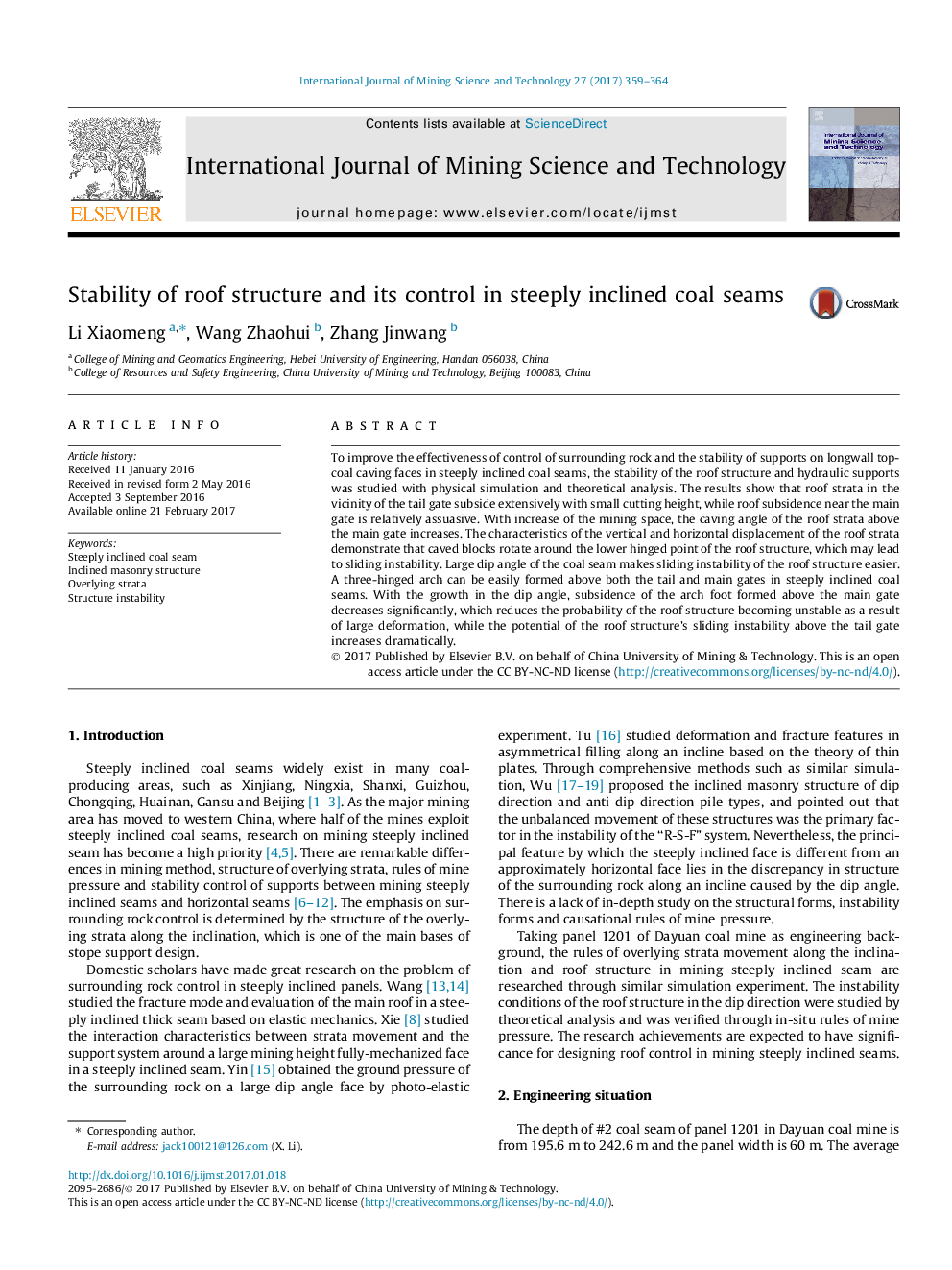| Article ID | Journal | Published Year | Pages | File Type |
|---|---|---|---|---|
| 4921784 | International Journal of Mining Science and Technology | 2017 | 6 Pages |
To improve the effectiveness of control of surrounding rock and the stability of supports on longwall top-coal caving faces in steeply inclined coal seams, the stability of the roof structure and hydraulic supports was studied with physical simulation and theoretical analysis. The results show that roof strata in the vicinity of the tail gate subside extensively with small cutting height, while roof subsidence near the main gate is relatively assuasive. With increase of the mining space, the caving angle of the roof strata above the main gate increases. The characteristics of the vertical and horizontal displacement of the roof strata demonstrate that caved blocks rotate around the lower hinged point of the roof structure, which may lead to sliding instability. Large dip angle of the coal seam makes sliding instability of the roof structure easier. A three-hinged arch can be easily formed above both the tail and main gates in steeply inclined coal seams. With the growth in the dip angle, subsidence of the arch foot formed above the main gate decreases significantly, which reduces the probability of the roof structure becoming unstable as a result of large deformation, while the potential of the roof structure's sliding instability above the tail gate increases dramatically.
